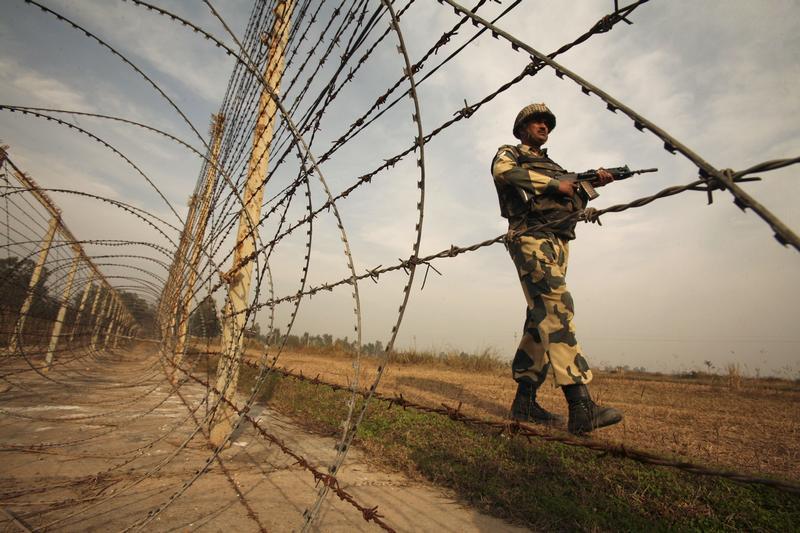
In fact, PM Modi made a surprise visit to Lahore on his way back from Russia and a stopover in Afghanistan in December 2015. It was significant that it was the first trip to Pakistan by an Indian leader since 2004, even, if it was in response to an invitation of then PM Nawaz Sharif for a family wedding. It augured well for both countries and the region. But the goodwill was not to last too long. An attack on a base in Pathankot in Punjab state in January 2016 and on an army base at URI in Indian-Occupied Kashmir in September of the same year gave PM Modi an opportunity to blame Pakistan.
Since then the Indian government has taken a highly antagonistic stance against Pakistan. The more troubling aspect is that PM Modi exploited Pakistan-bashing as a means for gaining support during last year’s Indian state elections. Most analysts are of the view that his hostile attitude would persist at least until the forthcoming general national elections due in April-May this year. And Pakistan should wait it out until then. PM Khan in some of his recent statements has voiced similar views.
However, policy of demonising and keeping pressure on Pakistan may continue even beyond. For it is also closely linked to the mass unrest in Kashmir that the Indian government is unable to handle with casualties on the rise. What is worse, the Indian leadership is in denial of the reality that its policy is not working. In fact, it has given a new life and energised the uprising. By accusing Pakistan of supporting the freedom movement in Kashmir India tries to deflect attention from the genuine nature of the revolt and its gross human rights violations.
Contrary to the understanding between the two countries for upholding the ceasefire, the Line of Control remains volatile with each side blaming the other for having initiated it. Frequent firing incidents and occurrence of casualties further aggravate tensions.
The Indian leadership is also uneasy with the China-Pakistan strategic partnership and with CPEC progressing it finds Pakistan’s position and role in the region expanding. In opposing this project tacitly it has the support of the US as well.
Furthermore, India loses no opportunity to exploit the grievances of the Baloch people.
India’s hostility towards Pakistan has its genesis in the very character of the BJP that traces its roots to the Bharatiya Jana Sangh. It believes in the supremacy of the Hindu upper castes and is considered to be prejudiced against not only Muslims but also Dalits, Christians and other minorities. How far it is still relevant or selectively applied probably is weighed against other factors.
Unsurprisingly, there are similar apprehensions on the Indian side that Pakistan has an identity crisis and thus it has to cast India in the frame of an enemy in search of its own identity. So unless that struggle is over the anti-Indian stance will not go away. How far this hypothesis is valid is a moot point.
Whereas Pakistan-bashing by India may be an expedient tactics in the short term, but is it a good strategy? The answer to this question rests primarily what PM Modi’s motive is and what exactly is he trying to achieve. His primary aim is to isolate Pakistan, deny its rightful regional role as it is one South Asian country that stands up to India. More importantly, it challenges its position on Kashmir and has become the foremost champion for the rights of Kashmiris.
Pakistan makes every effort to counter India’s military advantage, even if it is at a huge cost, by maintaining a modern conventional tri-service military force and a matching nuclear and missile capability. Of course, there are long-and medium-term implications of it to which Pakistan cannot remain oblivious.
Our military leadership’s willingness to improve relations with India is not taken seriously by the Modi government. There is a prevailing view in India that the Pakistan army realising that it is being financially squeezed due the country’s current predicament would like to reduce tension along the border. They also maintain as long as the military remains in control of Pakistan’s foreign policy and especially as related to India there is unlikely to be any fundamental change in relations.
The impact of adversarial relations with India has implications for our relations with Afghanistan and most of the other South Asian neighbours. In recent months Pakistan has been working hard to develop a strong trust based relationship with Afghanistan independent of India.
Moreover, Pakistan has taken definite measures to tighten control on militant organisations such as Lashkar-e-Taiba that is accused by India of attacking military and civilian targets notably the 2001 Indian parliament attack.
The use of non-state actors to supplement military capability has led to destabilising society and inviting serious international strictures. No doubt, of late Pakistan has enacted laws and ensured that these organisations are banned and their activists do not remerge under new names. But India would still try to keep the episode alive for propaganda purposes.
Opening of the Kartarpur corridor was a good initiative. It has generated considerable goodwill among the Sikh community in India and globally. Similar initiatives should be taken for other religious communities. And the visa regime should be more relaxed for businessmen, tourists and academics from India.
Despite all the hurdles it is still in the interest of Pakistan, and we believe for India as well, that both countries work seriously toward reconciliation and a cooperative relationship.
Better relations will contribute towards attracting investment, improving trade opportunities and above all enhancing international image. It will give greater leverage while dealing with major powers. If in spite of Pakistan’s sincere efforts, India fails to respond then the onus would rest on it.
Published in The Express Tribune, January 30th, 2019.
Like Opinion & Editorial on Facebook, follow @ETOpEd on Twitter to receive all updates on all our daily pieces.



1732745394-0/Diddy-(4)1732745394-0-165x106.webp)








COMMENTS
Comments are moderated and generally will be posted if they are on-topic and not abusive.
For more information, please see our Comments FAQ